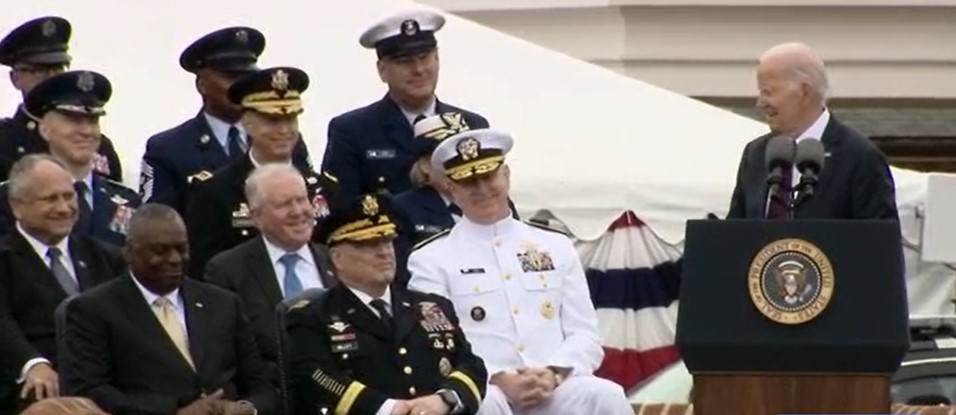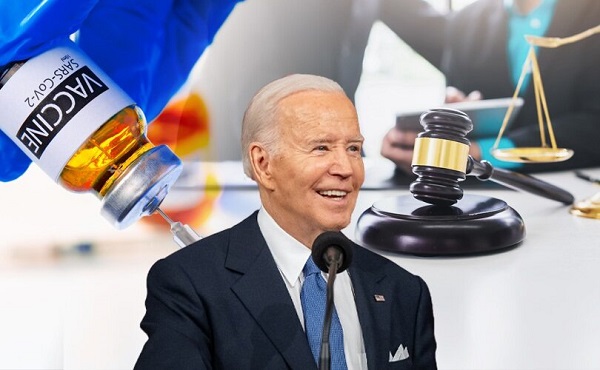International
Eastern Oregon Moves Closer to Joining Idaho

From Heartland Daily News
By Eileen Griffin
Eastern Oregon moves closer to joining Idaho with voters in Crook County approving a measure supporting Greater Idaho.
Another county supports the move away from Oregon to join the state of Idaho.
Voters in Crook County, Oregon passed a measure supporting the effort to move the Oregon/Idaho border such that Crook County would become part of Idaho, KTVZ reports.
Passing the measure makes Crook County the 13th Oregon County in favor of joining Idaho.
The Greater Idaho effort has been sweeping through eastern Oregon after years of being subjected to the far left policies driven by the population center of Portland, as Heartland Daily News previously reported. By March 2023, 11 counties had approved the Greater Idaho measure.
Although the measure is set to pass, the vote will not be certified until June, KREM reports. Approval of the measure does not mean the border will necessarily be moved. It means that the legislature is notified of the preference of voters in the eastern Oregon counties.
With 13 counties voting in support, it is clear the people of eastern Oregon would like to secede from western Oregon.
After the Crook County vote, Greater Idaho Executive Director Matt McCaw issued a statement on the organization’s website.
“The voters of eastern Oregon have spoken loudly and clearly about their desire to see border talks move forward,” McCaw said. “With this latest result in Crook County, there’s no excuse left for the Legislature and Governor to continue to ignore the people’s wishes.”
“We call on the Governor, Speaker of the House, and Senate President to sit down with us and discuss next steps toward changing governance for eastern Oregonians, as well as for the legislature to begin holding hearings on what a potential border change will look like,” McCaw said.
Greater Idaho President, Mike McCarter said, “For the last three years we’ve been going directly to voters and asking them what they want for their state government. What they’re telling us through these votes is that they want their leaders to move the border.”
If the border is moved, Oregon stands to lose a significant amount of land, including rural country, Newsweek reports. While the state would lose 2/3 of the land, it would only lose 10 percent of the population.
The far more populated areas in the western part of the state drive politics. When most people think of Oregon they think of Portland, not the rural eastern portion of the state. Oregon news stories are dominated by Portland’s problems with crime, lawlessness, and anarchy.
“The Greater Idaho Movement is an effort by those dissatisfied with lawmakers in Salem and are hoping to live under Idaho’s more conservative government,” write the news staff of Central Oregon Daily.
“Another right-leaning county in eastern Oregon has voted to secede from the Democrat-run state and join neighboring Idaho, according to reports,” writes Alex Oliveira for the New York Post.
“Backers of the plan argue the more conservative areas of eastern and central Oregon are currently dominated by liberal-leaning cities such as Portland and Salem and argue their interests would be better represented in traditionally Republican Idaho,” Jack Bickerton writes for Newsweek.
“Conservative residents in eastern Oregon have been ready to part ways with their liberal neighbors to the west, looking to secede from the state and join Idaho,” writes Devan Markham for News Nation. “Conflicting views on crime and social policies have created a large divide between the bigger cities and rural areas, sparking efforts to secede.”
armed forces
Top Brass Is On The Run Ahead Of Trump’s Return


From the Daily Caller News Foundation
By Morgan Murphy
With less than a month to go before President-elect Donald Trump takes office, the top brass are already running for cover. This week the Army’s chief of staff, Gen. Randy George, pledged to cut approximately a dozen general officers from the U.S. Army.
It is a start.
But given the Army is authorized 219 general officers, cutting just 12 is using a scalpel when a machete is in order. At present, the ratio of officers to enlisted personnel stands at an all-time high. During World War II, we had one general for every 6,000 troops. Today, we have one for every 1,600.
Right now, the United States has 1.3 million active-duty service members according to the Defense Manpower Data Center. Of those, 885 are flag officers (fun fact: you get your own flag when you make general or admiral, hence the term “flag officer” and “flagship”). In the reserve world, the ratio is even worse. There are 925 general and flag officers and a total reserve force of just 760,499 personnel. That is a flag for every 674 enlisted troops.
The hallways at the Pentagon are filled with a constellation of stars and the legions of staffers who support them. I’ve worked in both the Office of the Secretary of Defense and the Joint Chiefs of Staff. Starting around 2011, the Joint Staff began to surge in scope and power. Though the chairman of the Joint Chiefs is not in the chain of command and simply serves as an advisor to the president, there are a staggering 4,409 people working for the Joint Staff, including 1,400 civilians with an average salary of $196,800 (yes, you read that correctly). The Joint Staff budget for 2025 is estimated by the Department of Defense’s comptroller to be $1.3 billion.
In contrast, the Secretary of Defense — the civilian in charge of running our nation’s military — has a staff of 2,646 civilians and uniformed personnel. The disparity between the two staffs threatens the longstanding American principle of civilian control of the military.
Just look at what happens when civilians in the White House or the Senate dare question the ranks of America’s general class. “Politicizing the military!” critics cry, as if the Commander-in-Chief has no right to question the judgement of generals who botched the withdrawal from Afghanistan, bought into the woke ideology of diversity, equity and inclusion (DEI) or oversaw over-budget and behind-schedule weapons systems. Introducing accountability to the general class is not politicizing our nation’s military — it is called leadership.
What most Americans don’t understand is that our top brass is already very political. On any given day in our nation’s Capitol, a casual visitor is likely to run into multiple generals and admirals visiting our elected representatives and their staff. Ostensibly, these “briefs” are about various strategic threats and weapons systems — but everyone on the Hill knows our military leaders are also jockeying for their next assignment or promotion. It’s classic politics
The country witnessed this firsthand with now-retired Gen. Mark Milley. Most Americans were put off by what they saw. Milley brazenly played the Washington spin game, bragging in a Senate Armed Services hearing that he had interviewed with Bob Woodward and a host of other Washington, D.C. reporters.
Woodward later admitted in an interview with CNN that he was flabbergasted by Milley, recalling the chairman hadn’t just said “[Trump] is a problem or we can’t trust him,” but took it to the point of saying, “he is a danger to the country. He is the most dangerous person I know.” Woodward said that Milley’s attitude felt like an assignment editor ordering him, “Do something about this.”
Think on that a moment — an active-duty four star general spoke on the record, disparaging the Commander-in-Chief. Not only did it show rank insubordination and a breach of Uniform Code of Military Justice Article 88, but Milley’s actions represented a grave threat against the Constitution and civilian oversight of the military.
How will it play out now that Trump has returned? Old political hands know that what goes around comes around. Milley’s ham-handed political meddling may very well pave the way for a massive reorganization of flag officers similar to Gen. George C. Marshall’s “plucking board” of 1940. Marshall forced 500 colonels into retirement saying, “You give a good leader very little and he will succeed; you give mediocrity a great deal and they will fail.”
Marshall’s efforts to reorient the War Department to a meritocracy proved prescient when the United States entered World War II less than two years later.
Perhaps it’s time for another plucking board to remind the military brass that it is their civilian bosses who sit at the top of the U.S. chain of command.
Morgan Murphy is military thought leader, former press secretary to the Secretary of Defense and national security advisor in the U.S. Senate.
conflict
Trump has started negotiations to end the war in Ukraine

For the first time since Russian soldiers entered Ukraine in February 2022, the US is negotiating with Vladimir Putin. Surprisingly it’s not President Biden’s team at work, but President Elect Donald Trump. Trump has been working through Hungary’s Prime Minister Viktor Orban. President Orban traveled to the US to meet with Trump a day before he had an hour long phone conversation with Russian leader Vladimir Putin.
Clearly Trump is looking for at least a quick de-escalation if not an all out end to the conflict in Ukraine. Alex Christoforou and Alexander Mercouris of The Duran podcast explain the current situation.
-

 Alberta1 day ago
Alberta1 day agoProposed $70 billion AI data centre in MD of Greenview could launch an incredible new chapter for western Canadian energy
-

 Brownstone Institute5 hours ago
Brownstone Institute5 hours agoA Potpourri of the World’s Unexposed Scandals
-

 Alberta1 day ago
Alberta1 day agoYour towing rights! AMA unveils measures to help fight predatory towing
-

 Economy3 hours ago
Economy3 hours agoThe White Pill: Big Government Can Be Defeated (Just Ask the Soviet Union)
-

 conflict2 hours ago
conflict2 hours agoTrump has started negotiations to end the war in Ukraine
-

 COVID-1931 mins ago
COVID-1931 mins agoEsteemed UK Doctor pleads with governments to cancel COVID-19 vaccines
-

 COVID-196 hours ago
COVID-196 hours agoBiden HHS extends immunity for COVID shot manufacturers through 2029
-

 Bruce Dowbiggin4 hours ago
Bruce Dowbiggin4 hours agoMLB’s Exploding Chequebook: Parity Is Now For Suckers




